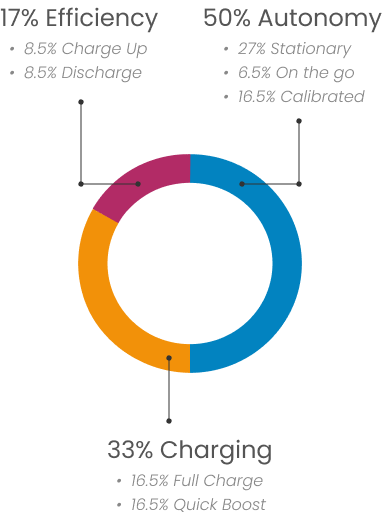Autonomy 50%
We evaluate how long a charge lasts along multiple scenarios of usage: whether you’re at home or on the go. We complete this with our calibrated test, to bring a comprehensive view on autonomy.
Home / Office
DXOMARK measures the battery life of the smartphone along a “24 hour typical usage scenario,” a simulated day that starts at 7AM and runs until 11PM just like a user would do.
Entirely automated and done in a controlled environment, the typical usage scenario takes into account calls, social networks, playing music, watching videos, gaming…. For a total of 4 hours of active use, which is the global daily average.
DXOMARK Battery experts particularly look at the overall autonomy performance, as well as unusual behaviors (such as the percentage lost during the night, or the duration of the last 10%)
On the Go
Our protocol takes into account the fact that power consumption can be affected when people are on the go, as their phones search for connectivity, use GPS/location services, employ fitness trackers, etc. DXOMARK Battery experts measure the typical autonomy you can expect for usages while being on the move: calls, social networks, take photos and videos, find your way, stream music.
Calibrated
DXOMARK measures the autonomy you can expect for a set of common usages (calls, music, videos, gaming), while being put on a fixed set of parameters (brightness level, loudness level…) in order to compare all smartphones equally – while Home / Office and On the go are tested with factory default settings



